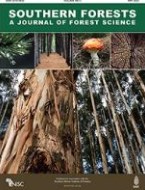The highest deforestation and forest degradation rates in Africa occur in the dry forests and woodlands where pressure for land is increasing, poverty is rampant, livelihood options are few and climate change effects are severe. This paper examines factors that cause land and forest degradation in the Sahel and dry forests and woodlands of eastern and southern Africa and highlights some successful restoration practices, technologies and approaches. In the Sahel, enclosures are used to protect young growing trees while in East Africa enclosures are implemented
on degraded land as a mechanism for environmental rehabilitation with a clear biophysical impact. The choice of techniques for rehabilitating specific degraded areas depends first on the priorities and management objectives of stakeholders followed by the costs and benefits associated with available rehabilitation techniques and the economic, social, and environmental values of the land resources in their current and desired future states. In the Sahel, sustainable land management is considered to be an imperative for their sustainable development and the practices include soil and water conservation activities and structures. In all regions, natural forest rehabilitation has used both natural and assisted regeneration to promote the growth of especially indigenous species through coppice regrowth and root suckers rather than seeds. Assisted regeneration was especially prevalent in the Sahel where indigenous tree species have been identified to dominate the degraded sites during early stages of secondary forest succession. The success of any rehabilitation activities depends on community-based natural resources management. In addition, the forest policies and their related policies need to be enabling in order to address issues of concern, including (1) the full participation of communities, (2) clear land and tree tenure and (3) equitable benefit sharing.

